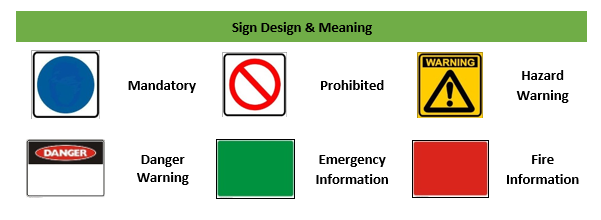Hazard Identification and Risk Assessment
Watch this Video:
A hazard is anything that has the potential to cause harm or long-term health effects to a person / animal, or damage to plant, equipment, or the environment.
We have assessed all tasks including the operation of plant and equipment in order to identify hazards and risks to the health and safety of the workers and others.
We have taken steps to eliminate identified hazards where possible. Where this cannot be achieved, steps have been taken to control the risks using the “Hierarchy of Controls”. In addition, personal protective equipment (PPE) is provided where required.
Job Safety Analysis
A Job Safety Analysis (Job hazard analysis, Task hazard analysis, etc.) are developed by work teams prior to commencing any task that is not already covered by a procedure, or where a task varies from the standard safe work instruction. The Job Safety Analysis identifies the specific job steps, potential hazards or risks associated with job step (including the immediate work environment) and control measures that reduce the identified risks.
Job Safety Analysis shall be developed by the personnel conducting the task, signed by the work group, and reviewed by Supervisor prior to commencing the task.
Safe Operating Procedures (SOP)
We have developed a number of Safe Operational Procedures for all regular performed high risk tasks. Safe Operating Procedures are designed to guide workers in safely carrying out specific tasks or operating plant and equipment, in line with manufacturer’s instructions while undertaking their duties.
Your Supervisor will provide you with the relevant information, instruction, and training on any Safe Operational Procedures to a level of competency so you can undertake your duties safely. It is your obligation to comply with any reasonable instruction designed to protect your health and safety and undertake this training and comply with the instruction contained in the procedures.
Safe Operational Procedures folders are stored in all company vehicles, office/depot and located next to the operational controls of fixed plant and equipment.
Safe Work Method Statements (SWMS)
Safe Work Method Statements (similar to Job Safety Analysis) are developed in consultation with workers who are experienced in the subject matter and have sound knowledge of the task, plant, and equipment, this includes, but not limited to, the Safety Coordinator, Project Supervisors, Project Managers, Health and Safety Representatives and experienced workers. If you are involved in carrying out Construction Work, you will be provided with a Safe Work Method Statement.
Safe Work Method Statements steps out the process to complete the task, hazards are identified and associated with each step of the process and risk control measures are documented to manage the risks associate with the task.
Your Supervisor will provide information, instruction, and training to you on any Safe Work Method Statements you are required to use. It is your duty to undertake this training and carry out each key stage and implement the risk controls contained in the Safe Work Method Statements.
Safety Signs
You must follow the requirements of all safety signs. these apply to all persons on site. Safety signs alert you to hazards or conditions where a person’s health and safety may be placed at risk. If you’re unsure or do not know the meaning of a sign, ask your Supervisor, who will explain it to you.


Personal Protective Equipment
Watch this video:
We shall provide personal protective equipment (PPE) for your protection where there is no other alternative in managing the risks to health and safety associated with exposure to hazards while performing your duties.
We shall provide training in the use of the supplied PPE, once trained you are required to conduct a risk assessment and document that risk assessment and get approval from your supervisor PRIOR to changing any PPE as required by your SWMS or SOP.
All workers shall, when working in operational areas outside of the office buildings, wear the following minimum personal protective equipment:
• High Visibility long sleeve shirts with the sleeves rolled down at all times and cuffs buttoned (no short sleeve).
• Cargo pants or denim jeans (Hi-visibility overalls can be worn instead).
• Hi-ankle lace or zip up steel capped safety boots (no pull / slip on).
• Hard hat.
• Darkened safety glasses (for sun glare)
• Clear safety glasses (for night, overcast or inside buildings)
• Glove belt clip with rigger or stinger gloves attached to belt.
Additional personal protective equipment shall be worn wherever indicated by mandatory blue and white signs, procedures, or instructions from your Supervisor. It is your responsibility to wear any personal protective equipment provided and to ensure that it is maintained and kept clean.
Where your personal protective equipment becomes lost, damaged or malfunctions, speak with your Supervisor and obtain a replacement before returning to your work.
Speak with your Supervisor about any questions, concerns or if you have not been fit tested or instructed on the correct use and maintenance of personal protective equipment.
Respirators
Health hazards can exist due to excessive levels or the accumulation of dust along with other risks, such as fumes, mist, or vapours which may present a risk to your health and safety.
We haves respiratory hazards relating to dust being generated from vehicle and mobile plant movement, mineral processing and crushing operations, maintenance activities and weather conditions.
These hazards have been identified and the risks to health and safety have been assessed and risk controls implemented. A key part to manage the risk of exposure is personal protective equipment in the form of respirators.
Respirators include:
• Dust and Fume masks.
• Cartridge type, half-face, and full-face masks.
• Air supplied full-face masks.
Workers shall be fit tested for respirators and required to wear either half or full face respirator equipment. Respirators must be worn where identified in Safe Work Procedures, in areas where identified by signage or where instructed by supervision.
